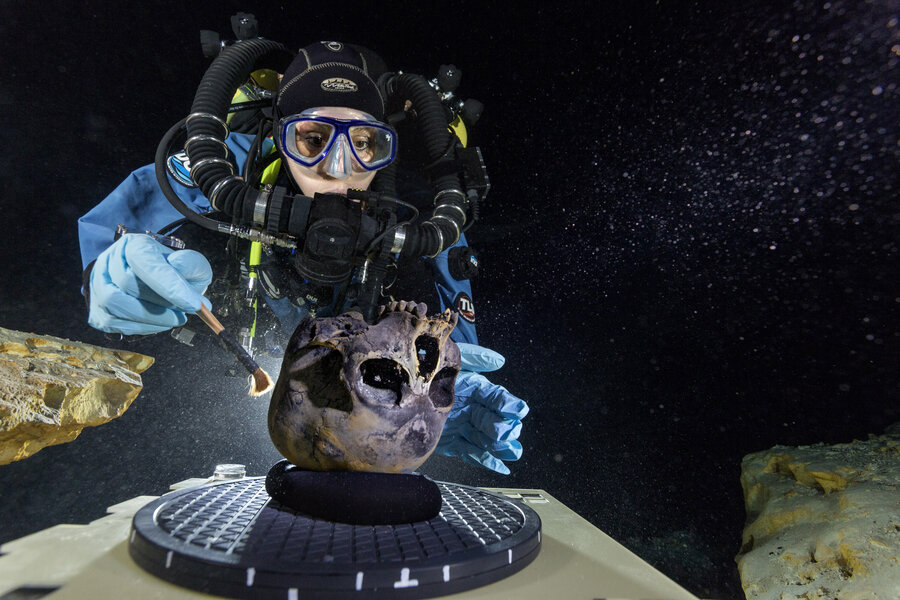Despite deaths, here's why scientists still call cave diving 'critical'
Loading...
Two cave divers died over the weekend while exploring the Florida underwater system known as Eagle’s Nest, located about an hour north of Tampa, stunning their families and prompting calls for the closure of a notoriously perilous system.
Chris Rittenmeyer, a Dallas-born digital technology specialist for the Boston Consulting Group, and his friend Patrick Peacock, an adjunct professor of history and philosophy at the Art Institute of Fort Lauderdale and operator of a non-profit dive group, were found at about 260 feet down, in a particularly labyrinthine section of the system, according to the Sun Sentinel. Exactly what went wrong during the dive is unclear, but family described them as experienced divers.
“I guarantee you there was nothing left for them to do in the end,” said Ron Rittenmeyer, the father of Chris, in an interview with CBS.
“My son typically dove what he thought was his limit. I believe in his heart he did this dive fully expecting that he would be back,” he said.
The tragedy seems to highlight how dangerous cave systems can be for even the most experienced of divers, and perhaps in particular for explorers seeking to test the limits of where they can go. Ten people have died at Eagle’s Nest since 1981, and the site was closed off for four years before divers successfully got it reopened in 2003, according to CBS.
“It’s the cave explorers that can get into more trouble because they’re doing more dangerous dives,” Jim Garey, a professor at the University of South Florida who studies the biodiversity, hydrology and geochemistry of cave and aquifer systems, tells The Christian Science Monitor. “It’s far more dangerous than what I do. My goal isn’t to go as far or deep into the cave as I can, it’s to study what’s going on in the cave.”
Divers first began plumbing underwater cave systems in the mid-1960s, with the advent of scuba apparatuses. And despite the high costs and the risk involved, for scientists, diving is an irreplaceable way to know more about the systems and tap secrets of broader import, as when geologists draw inferences about sea levels from cave rock formations.
When drilling to collect samples, Dr. Garey tells the Monitor, researchers don’t know if they’re collecting water from a single source or several different ones, since a single aquifer can have different layers of water. “When you’re thinking about a spring from the surface, you’re looking at things flowing out of it, but it’s a complicated story underground.”
As the Monitor noted in a 1982 article on cave divers in Florida, much of the area north of Tampa and west of the state’s central ridge is streaked with tunnels formed in limestone deposits.
Layers of limestone, which is largely compressed coral, were created each time the sea level rose to wash over the land. Those layers make up Florida's aquifer, the freshwater-laden rock that supplies most of the state's drinking water.
As the sea level receded, the limestone was exposed to rainwater, which is slightly acidic from carbon dioxide and soil acids. The acidity dissolved the limestone along its cracks and fissures, which created sinkholes dropping scores of feet, tunnels hundreds of feet long, and caverns as large as a football stadium.
The caverns became interconnected by the tunnels to form underground rivers that eventually pop out as springs. Some of those springs are along the marshland that borders the Gulf of Mexico, and the fresh water pouring out of them has become an integral part of the coastline ecology.
Tom Iliffe, a marine biologist and cave diving authority at Texas A&M University at Galveston, studies animals that inhabit salt water caves near the coast. Diving, he tells the Monitor, is “absolutely critical” to his work.
“They have a layer of fresh or brackish water on the surface,” with the heavier salt water lying beneath. “The animals I’m looking for occur only in this deep salt water layer in caves, and only by diving can we access this environment.”
“There’s untapped potential here” for scientists, he says. And he doesn’t pass over the charms of the experience. “For the appropriate person, it can be absolutely fascinating and bewitching.”








